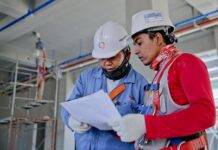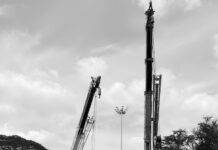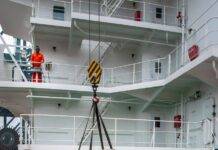
How To Become a Lifting Supervisor
Understanding the Role of a Lifting Supervisor
How To Become a Lifting Supervisor :Becoming a lifting supervisor is a rewarding career choice for those who have a passion for safety, precision, and teamwork. This role plays a crucial part in ensuring the safety and efficiency of heavy lifting operations in various industries. In this article, we’ll guide you through the path to becoming a competent lifting supervisor.
Qualifications and Skills Required
To embark on the journey of becoming a lifting supervisor, it’s essential to meet certain qualifications and possess specific skills. Here’s what you need to get started:
Education
A high school diploma or equivalent is typically the minimum educational requirement. However, some employers may prefer candidates with post-secondary education in fields related to lifting operations, such as engineering or construction management.
Certification
Obtaining relevant certifications, such as the Certified Lifting Supervisor (CLS) certification, is highly advantageous. These certifications demonstrate your commitment to safety and competence in the field.
Technical Knowledge
Familiarize yourself with the equipment and machinery used in lifting operations. Understanding their functions, maintenance, and safety features is essential.
Communication Skills
Lifting supervisors need strong communication skills to convey instructions clearly to the lifting team and coordinate with other stakeholders on the worksite.
Safety Regulations and Compliance
Compliance with safety regulations is of utmost importance in the role of a lifting supervisor. Familiarize yourself with industry-specific safety standards and regulations, as they vary from one sector to another. Keep up-to-date with changes in safety regulations and ensure your team follows them rigorously.
Responsibilities of a Lifting Supervisor
As a lifting supervisor, your responsibilities encompass various aspects of the job, including:
Equipment and Tools
Oversee the proper use and maintenance of lifting equipment, including cranes, hoists, and forklifts. Ensure all equipment is in optimal working condition.
Communication and Coordination
Maintain open lines of communication with the lifting team, crane operators, and other stakeholders. Coordinate the movements of heavy loads and ensure safety protocols are followed.
Managing Risks and Emergencies
Identify potential risks and develop contingency plans for emergencies. Your quick thinking can prevent accidents and mitigate potential damage.
Best Practices in Lifting Supervision
To excel in your role as a lifting supervisor, follow these best practices:
Regular Inspections
Conduct routine inspections of lifting equipment to detect and address any issues promptly.
Safety Training
Provide ongoing safety training for your team to ensure they are aware of the latest safety measures and protocols.
Documentation
Maintain comprehensive records of all lifting operations, safety checks, and incident reports. This documentation is critical for compliance and continuous improvement.
Training and Certification
To gain the necessary skills and knowledge for this role, consider enrolling in lifting supervisor training programs. These programs offer hands-on experience and often include certification upon completion.
Career Opportunities
A lifting supervisor’s role is not limited to a single industry. Opportunities exist in construction, manufacturing, shipping, and more. Consider your interests and strengths when choosing the sector you’d like to work in.
Job Search and Application
When searching for a lifting supervisor position, utilize job search engines and industry-specific websites. Tailor your resume and cover letter to highlight your relevant qualifications and experience.
Interview and Assessment
Prepare for interviews by researching the company, practicing common interview questions, and showcasing your understanding of safety regulations and lifting operations. You may also be required to demonstrate your knowledge through a practical assessment.
On-the-Job Success
Once you’ve secured a lifting supervisor position, strive for excellence by consistently upholding safety standards, maintaining open communication, and enhancing your leadership skills.
Conclusion
Becoming a lifting supervisor is a journey that requires dedication, continuous learning, and a commitment to safety. By meeting the qualifications, gaining the necessary skills, and adhering to safety regulations, you can embark on a rewarding career in lifting supervision.
How To Become a Crane Operator
Types of Cranes Used in Construction
Rigging Hazards and Precautions
FAQs
- What is the role of a lifting supervisor in the construction industry?
- Lifting supervisors in construction oversee heavy lifting operations to ensure safety and efficiency.
- Is certification required to become a lifting supervisor?
- While not always mandatory, certification is highly recommended and can boost your career prospects.
- What are the key responsibilities of a lifting supervisor?
- Lifting supervisors manage equipment, coordinate lifting operations, and prioritize safety.
- Can women pursue a career as a lifting supervisor?
- Absolutely! Lifting supervision is a career open to individuals of all genders.
- Are there opportunities for advancement in this field?
- Yes, experienced lifting supervisors can progress to higher-level supervisory roles or even management positions in some cases.
























